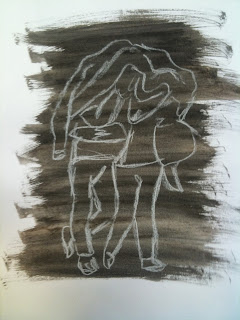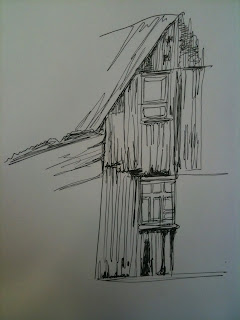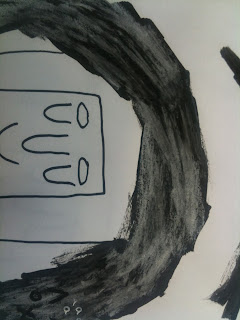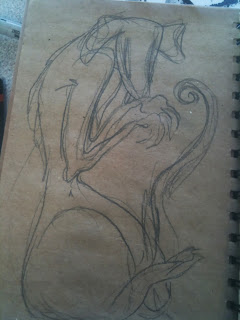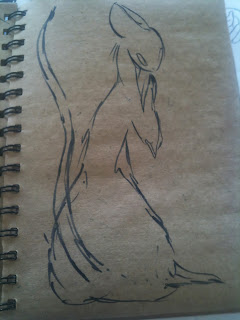Below are my final pieces following the previous visual language brief where we were asked to collect 4 different types of images and then to go on to experiment with different types of media by responding to the images we had collected.
For the portrait image I first started using ink and charcoal, because I thought it would be easiest to achieve a similar variation in tone using these. I found that whilst it was a very fun media to use and gave some really nice results, I think that it was sometimes quite hard to control, so you could not create a very clean line with it. I was given some feedback on this initial sketch and was told that the way I had used simple dots of ink to represent her freckles rather than copy them exactly was very effective, because it didn't have to be exactly the same as the original to communicate what it originally was.
I then went on to use just charcoal, and although I did not get the composition or the shape of the face 100% correct, I think that using just charcoal helped me to get a more softer look the lines, although it was quite hard to do the eyes, as you can't get very intricate detail whilst using charcoal.
For the final portrait sketch I decided to focus just on the facial features, I decided to use a combination of ink and pencil, so I could use the ink to represent the darkest shadows in the image, and use the pencil to get the more close up detail in her face. I think this one was the most successful because it combined the good elements from the previous two, the versatility of the ink and the flowing lines that it gives, and also the detail which pencils can give you, which using charcoal lacks.
For the first figure sketch I wanted to just get the general shape and look of the two figures into the image, so I decided to use charcoal. I did a quick blocky sketch which allowed me to get a sense of the placing and proportions of the figures. However, again it was quite hard to get the detail of the folds in the fabric into the image.
Here I used just a simple fine line pen. I started to look more at the folds and creases in the clothes and how they related to the shape of the body and where they appeared. Using the fine pen allowed me to get a thin and precise line, although I didn't want the sketch to be too realistic, as it was again only meant to represent what was in the original photo.
As the photo itself was quite dark I decided to experiment with using a light tool on top of a dark background, I went with an ink was background, that had been slightly diluted to give it a gradient effect and chalk on top, which is quite similar to charcoal in the way that it is hard to get detail but gives a nice texture.
Here I am just playing around with trying to create the lines we see in the original photo. Obviously using charcoal would not give the tiny and intricate line detail, but it would allow me to experiment with trying to create lines that would just represent the original, rather than recreate them. I particularly liked the texture created on the roof, from dragging the charcoal along on its' side.
For the second sketch I wanted to do something completely different form the last, so I decided to use a pencil to look closely at sections of detail within the photo. I think this was a particularly interesting image to draw, because of the wide variety of shadowing and tone. Although I think this drawing was successful I wanted to do something a bit more abstract, yet still include the same amount of detail.
This one is my favourite of the three images, because it has a lot of the detail in it from the photo, however it only uses gestural lines to suggest the detail rather than copying it exactly. Like my feedback from the portrait sketches, I do agree that it is better to use a certain media to convey something.





































